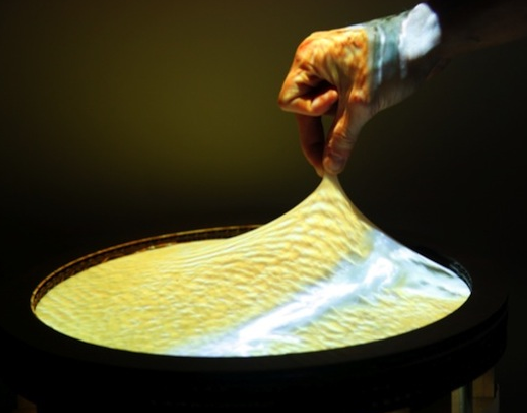Touchscreens have become such a normal part of our everyday lives. When seeing someone using a mobile phone without one, you automatically assume it's outdated and would agree that it's seriously time for an upgrade. As for the future, it seems like anything is possible. The MIT Media Lab team has been digging their fingers into an odd yet intriguing idea for touch technology: an elasticated screen that allows immersive data to be physically manipulated.
Future Digital Interaction
The stretchable screen, called Obake, is a combination of a 2.5D elastic display made from silicone rubber, a Kinect sensor for motion tracking, and a projector for creating a dynamic image. This technology allows your fingers to physically dig into the screen, and may very well represent the future of digital interaction.

The stretchy screen, Obake. Image via discovery.com.
The screen is compromised of a flexible rubber sheet laid over a set of actuators, which are used to maintain shapes, even if the user stops pinching and twisting them. By pulling and pushing on the silicone surface, the user can navigate through the projected image, with the Kinect sensors tracking where the layer is flexed to. The whole thing is set beneath a camera built from a Kinect projector that projects images onto the sheet. The camera is also able to measure how deep the screen is poked into it or how far it's been stretched.
True 3D
By pulling on the sheet, you can make a “mountain” peak, and if you poke it, you'll dent it. If you stretch the sheet, the image on it will become distorted. The reason behind Obake is to make touch displays truly 3D, since current technology isn't actually 3D, but an optical illusion instead. Though virtual reality lets users manipulate objects with gestures, having a screen you can touch and stretch can really bring things to life.
Because Obake is a working prototype, there's no telling if and when it will become a commercial product. Because actuators are quite large, and there will have to be room for pressing in and extruding, along with a projector, this technology will most likely first show up on tabletop applications.
By Nicole DiGiose
Advertisement
Learn more about Mouser Electronics





